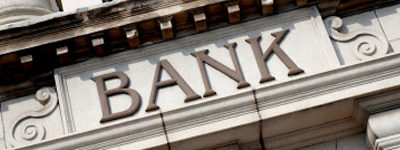%
Jubak’s Picks Performance 1997-2019
Jubak’s Picks
Buy and hold? Not really.
Short-term trading?
Not by a long shot.
So what is the stock-picking style of The Jubak’s Picks portfolio?
Click to expand...
Click to View the Jubak’s Picks Portfolio
I try to go with the market’s momentum when the trend is strong and the risk isn’t too high, and I go against the herd when the bulls have turned piggy and the bears have lost all perspective. What are the results of this moderately active — the holding period is 12 to 18 months — all-stock portfolio since inception in May 1997? A total return of 584% as of December 31, 2019. That compares to a total return on the S&P 500 stock index of 335% during the same period.
%
Top 50 Stocks Performance 2019
Top 50 Stocks
This long-term, buy-and-holdish portfolio was originally based on my 2008 book The Jubak Picks.
Trends that are strong enough, global enough, and long-lasting enough to surpass stock market averages.
Click to expand...
Click to view the Top 50 Stocks Portfolio
In The Jubak’s Picks Portfolio I identified ten trends that were strong enough, global enough, and long-lasting enough to give anyone who invested in them a good chance of beating the stock market averages.
To mark the publication of my new book on volatility, Juggling with Knives, and to bring the existing long-term picks portfolio into line with what I learned in writing that book and my best new ideas on how to invest for the long-term in a period of high volatility, I’m completely overhauling the existing Top 50 Picks portfolio.
You can buy Juggling with Knives at bit.ly/jugglingwithknives
%
Dividend Income Performance 2021
Dividend Income
Every income investor needs a healthy dose of dividend stocks.
Why bother?
Why not just concentrate on bonds or CDs?
Click to expand...
Click to view the Dividend Income Portfolio
Because all the different income-producing assets available to income investors have characteristics that make them suited to one market and not another. You need all of these types of assets if you’re going to generate maximum income with minimum risk as the market twists and turns.
For example: bonds are great when interest rates are falling. Buy early in that kind of market and you can just sit back and collect that initial high yield as well as the capital gains that are generated as the bonds appreciate in price with each drop in interest rates.
CDs, on the other hand, are a great way to lock in a yield with almost absolute safety when you’d like to avoid the risk of having to reinvest in an uncertain market or when interest rates are crashing.
Dividend stocks have one very special characteristic that sets them apart from bonds and CDs: companies raise dividends over time. Some companies raise them significantly from one quarter or year to the next. That makes a dividend-paying stock one of the best sources of income when interest rates start to rise.
Bonds will get killed in that environment because bond prices will fall so that yields on existing bonds keep pace with rising interest rates.
But because interest rates usually go up during periods when the economy is cooking, there’s a very good chance that the company you own will be seeing rising profits. And that it will raise its dividend payout to share some of that with shareholders.
With a dividend stock you’ve got a chance that the yield you’re collecting will keep up with rising market interest rates.
But wouldn’t ya know it?
Just when dividend investing is getting to be more important—becoming in my opinion the key stock market strategy for the current market environment—it’s also getting to be more difficult to execute with shifting tax rates and special dividends distorting the reported yield on many stocks.
I think there’s really only one real choice—investors have to pull up their socks and work even harder at their dividend investing strategy. That’s why I revamped the format of the Dividend Income portfolio that I’ve been running since October 2009. The changes aren’t to the basic strategy. That’s worked well, I think, and I’ll give you some numbers later on so you can judge for yourself. No, the changes are designed to do two things: First, to let you and me track the performance of the portfolio more comprehensively and more easily compare it to the performance turned in by other strategies, and second, to generate a bigger and more frequent roster of dividend picks so that readers, especially readers who suddenly have a need to put more money to work in a dividend strategy, have more dividend choices to work with.
Why is dividend investing so important in this environment? I’ve laid out the reasons elsewhere but let me recapitulate here. Volatility will create repeated opportunities to capture yields of 5%–the “new normal” and “paranormal” target rate of return–or more as stock prices fall in the latest panic. By using that 5% dividend yield as a target for buys (and sells) dividend investors will avoid the worst of buying high (yields won’t justify the buy) and selling low (yields will argue that this is a time to buy.) And unlike bond payouts, which are fixed by coupon, stock dividends can rise with time, giving investors some protection against inflation.
The challenge in dividend investing during this period is using dividend yield as a guide to buying and selling without becoming totally and exclusively focused on yield. What continues to matter most is total return. A 5% yield can get wiped out very easily by a relatively small drop in share price.
Going forward, I will continue to report on the cash thrown off by the portfolio—since I recognize that many investors are looking for ways to increase their current cash incomes. But I’m also going to report the total return on the portfolio—so you can compare this performance to other alternatives—and I’m going to assume that an investor will reinvest the cash from these dividend stocks back into other dividend stocks. That will give the portfolio—and investors who follow it—the advantage of compounding over time, one of the biggest strengths in any dividend income strategy.
What are some of the numbers on this portfolio? $29,477 in dividends received from October 2009 through December 31, 2013. On the original $100,000 investment in October 2009 that comes to a 29.5% payout on that initial investment over a period of 39 months. That’s a compound annual growth rate of 8.27%.
And since we care about total return, how about capital gains or losses from the portfolio? The total equity price value of the portfolio came to $119,958 on December 31, 2012. That’s a gain of $19,958 over 39 months on that initial $100,000 investment or a compound annual growth rate of 5.76%.
The total return on the portfolio for that period comes to $49,435 or a compound annual growth rate of 13.2%.
How does that compare to the total return on the Standard & Poor’s 500 Stock Index for that 39-month period? In that period $100,000 invested in the S&P 500 would have grown to $141,468 with price appreciation and dividends included.) That’s a total compounded annual rate of return of 11.26%.
That’s an annual 2 percentage point advantage to my Dividend Income portfolio. That’s significant, I’d argue, in the context of a low risk strategy.
Portfolio Related Posts
Cheniere Energy pops on possibility of increased China exports
Earlier this week the Trump administration announced that it had reached an agreement with China to increase market access for U.S. energy companies. Today Cheniere Energy (LNG) noted that it has had extensive negotiations with Chinese state-owned companies about increasing shipments of liquefied natural gas (LNG) to China. Cheniere has sold nine cargoes of LNG on the spot market to China since it began exporting liquified natural gas in February 2016. The goal now for the company is moving from sales on the spot market to long-term contracts. On the news shares of Cheniere are up 3.24% as of 3:30 p.m. New York time.
New tax proposal knocks back shares of Australian banks including my Dividend Portfolio pick Westpac Banking
The new Australian federal budget includes a 6 basis point (100 basis points equal one percentage point) annual tax on liabilities at the country’s five biggest banks. The tax would apply to liabilities including senior bonds, covered bonds, subordinated bonds and all retail deposits above A$250,000 per individual. The levy would raise about A$6.2 billion over four years, the government estimates, and is designed to reassure credit rating companies that have begun to question the government’s spending. The proposed tax would reduce earnings at major banks by about 4.5%, Morgan Stanley estimates
Freeport McMoRan and Indonesia agree to extend agreement deadline for another 6 months
The stakes are so high that a deal is almost a certainty. Freeport McMoRan Copper and Gold (FCX) needs the copper production from the giant Grasberg mine, the second largest in the world. The government of Indonesia needs the revenue it gains from Grasberg. It’s just about impossible to imagine that talks over a new contract to operate the mine won’t reach a successful conclusion. But when the politics are as tricky as they are in this case, it’s by no means certain that economic rationality will triumph.
Price is right on Coach acquisition of Kate Spade
The price is right. The strategy makes sense. Now it’s up to the management team at Coach (COH) to execute. Yesterday, May 8, Coach announced that it would buy Kate Spade (KATE) for $18.50 a share. That’s a 27.5% premium on the December 2016 price for the shares of the maker of handbags and accessories targeted at the millennial market. But Kate Spade shares traded at $24 just two months ago and the price of “only” 9.4 times cash flow is way below the average of 14 times for recent deals in the luxury sector.
Sell Bristol-Myers Squibb before Thursday’s earnings report
I’m selling Bristol-Myers Squibb (BMY) out of my Jubak Picks portfolio ahead of Thursday’s report of first quarter earnings. I’m afraid that earnings will confirm what monthly sales reports from Bristol-Myers and competitors have outlined: That the company’s Opdivo cancer drug continues to lose market share among lung cancer treatments to drugs from Merck (MRK) and Roche Holding (RHHBY). That might not be a big deal–troubles with one drug, phfff–at another drug company or at another time, but Opdivo is critical to Bristol-Myers establishing the credibility of future growth with investors. Wall Street sees lung cancer as an estimated $10 billion to $15 billion market opportunity.
Incyte dropped 10.5% yesterday on FDA drug “rejection”: Here’s what’s actually going on (and why you shouldn’t sell)
I know the headlines on Friday said that the U.S. Food and Drug Administration had “rejected” Olumiant (known more frequently until recently as baricitinib), a new drug for rheumatoid arthritis from Eli Lilly (LLY) and research lead Incyte Corp (INCY.) And on those headlines shares of Incyte dropped $14.77 a share on Monday to $126.07 from $140.84. The shares trickled lower to $125.84, down 0.13% today. What you need to know about this story is that the FDA didn’t reject baricitinib.
Samsung’s Galaxy S8 just got less dangerous for Apple
Today Samsung announced that one of the key features for the S8, a feature that Samsung badly needs to compete with Apple and with Android-based smartphones, won’t be ready for the April 21 on sale date. Samsung’s Bixby, the digital assistant that is intended to compete with Apple’s Siri and Google Assistant on Android phones, won’t be ready to launch on Aril 21. Some features will be in place, Samsung said today. But voice activation won’t be available in the U.S. market until “later this spring.”
Vale gets a new CEO and gets rid of control by its old shareholders
Vale (VALE) has a new CEO–that’s an important and immediate change. It will take longer to end the control of Vale by a small group of banks and Brazilian state pension funds–until 2020–but that may actually be more important in the long run. The two issues–CEO and shareholder structure–are interrelated.










